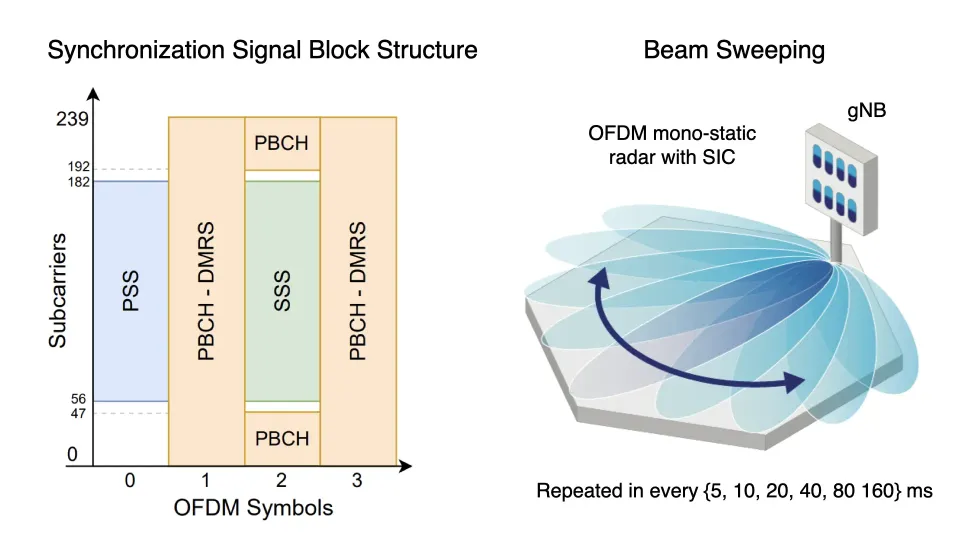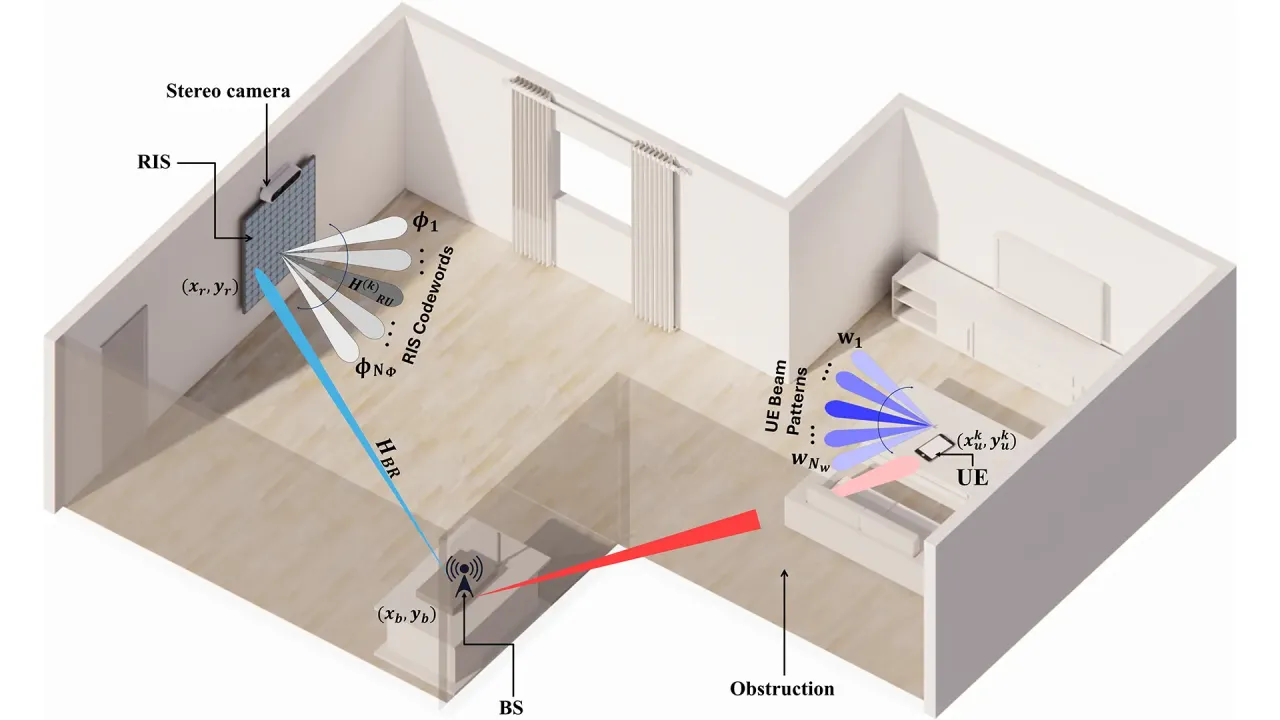
RIS-Aided mmWave Indoor Localization
Overview
Deep Learning Framework for RSSI-Based Indoor Localization in RIS-Aided mmWave Systems.
We present a novel deep learning framework for indoor localization in millimeter-wave (mmWave) environments using received signal strength indicator (RSSI) measurements from a reconfigurable intelligent surface (RIS)-aided system. Our dual-stream orientation-gated (DSOG) architecture addresses the critical challenges of non-line-of-sight (NLoS) conditions and orientation variability, achieving unprecedented decimeter-level accuracy with a median error of 0.19 m—outperforming classical methods by 74.7% and conventional deep learning baselines by 89.6%.
System Architecture and Setup
System Overview
Our RIS-aided localization system operates at 28 GHz in challenging non-line-of-sight (NLoS) indoor environments. The system leverages a 400-element RIS (20×20 array) to create virtual line-of-sight paths between a base station and mobile user equipment, enabling precise positioning even when direct paths are blocked.
Key Components:
- Sivers EVK02004 phased array modules (4×4 UPA)
- 28 GHz carrier frequency with 40 MHz bandwidth
- Software-defined radio platform (USRP B200 Mini)
- ZED 2 stereo camera for ground-truth data
- ESP-WROOM-32 controlled RIS
Experimental Parameters
- Coverage Area: 3–7 m from RIS, 0°–70° angular range
- Orientations Tested: 0°, 26.6°, 45°, 63.4°
- Dataset Size: 1,534 measurement samples
- RSSI Matrix: 60 UE beams × 15 RIS configurations
- Environment: Indoor laboratory with controlled obstruction
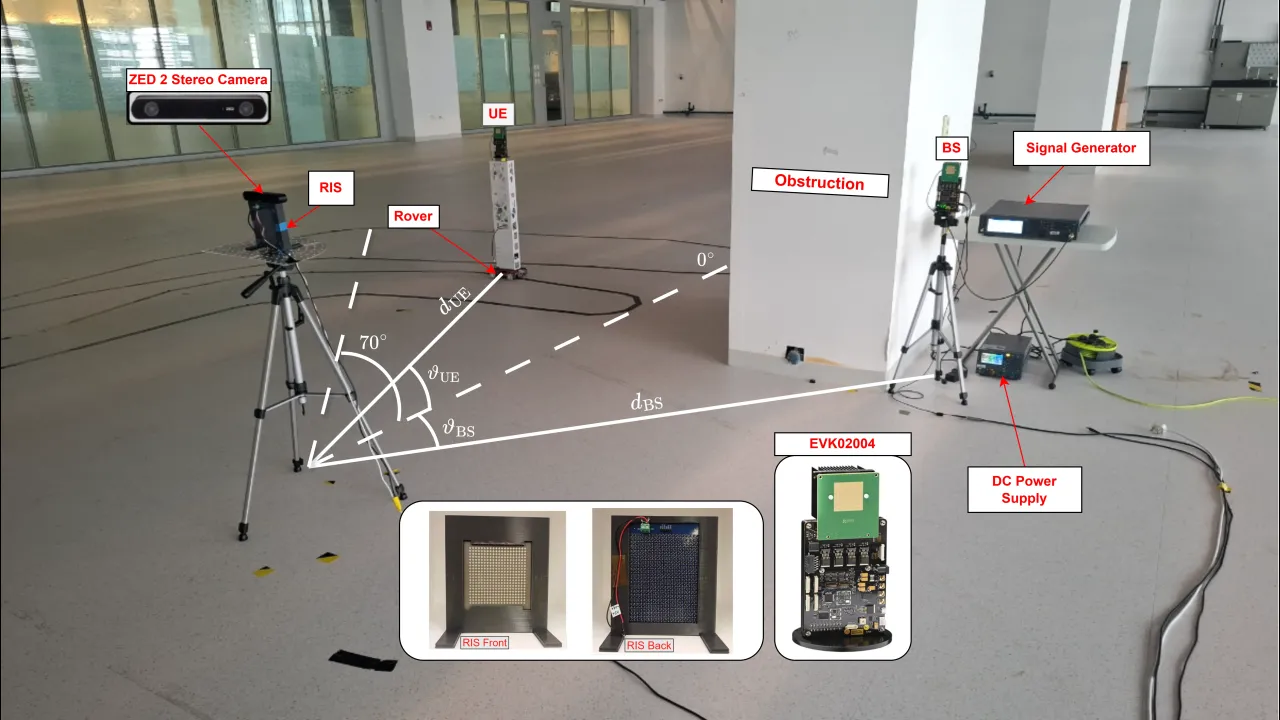
DSOG Framework
Our framework introduces three key innovations to achieve robust mmWave localization:
- Orientation-Gated CNN Stage: Utilizes a mixture-of-experts architecture with four orientation-specific CNN paths that adaptively process RSSI patterns based on device orientation. This addresses the fundamental challenge that identical positions can produce different RSSI signatures when the device orientation changes.
- Dual-Stream Processing: Combines detailed spatial feature extraction through CNNs with robust statistical aggregation of beam responses, effectively capturing both fine-grained spatial patterns and coarse spatial statistics.
- Temporal Modeling: BiLSTM networks process sequences of ten consecutive measurements to capture motion dynamics and mitigate transient signal fluctuations.
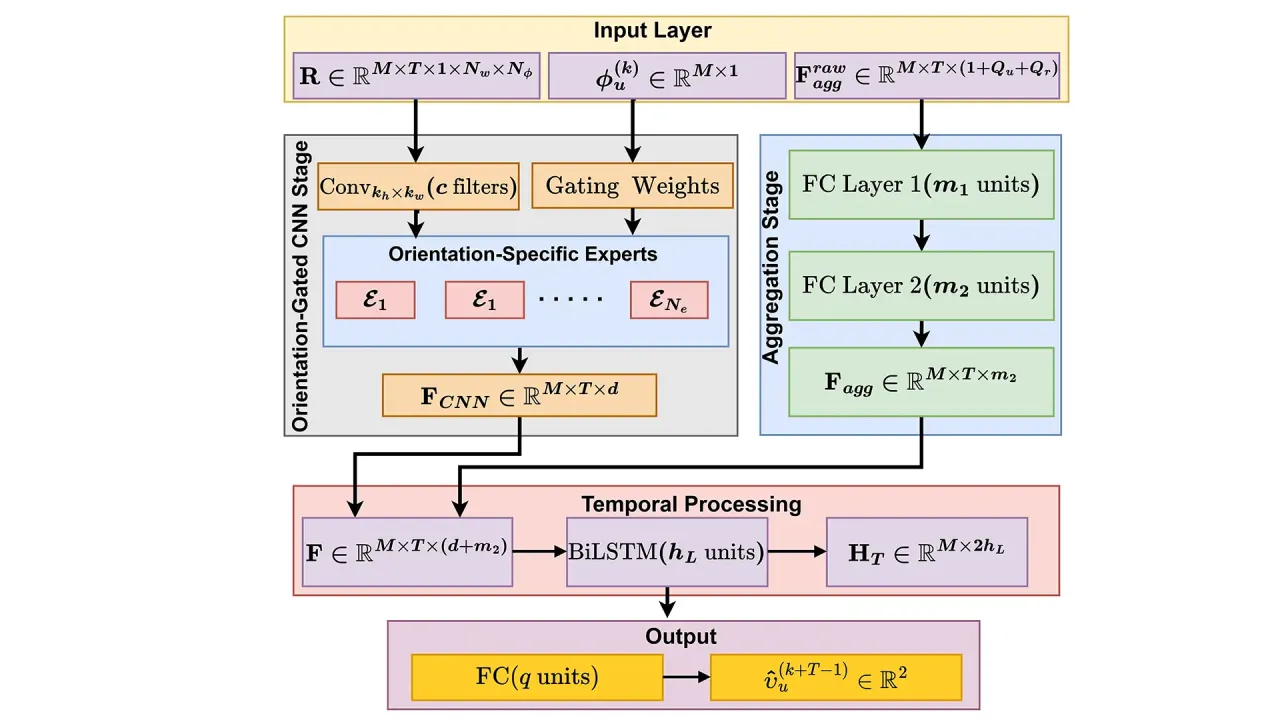
Performance Results
Accuracy Achievements
- Mean Error: 0.25 m
- Median Error: 0.19 m
- 95th Percentile: 0.59 m
- 72% of errors < 0.25 m
- 92% of errors < 0.5 m
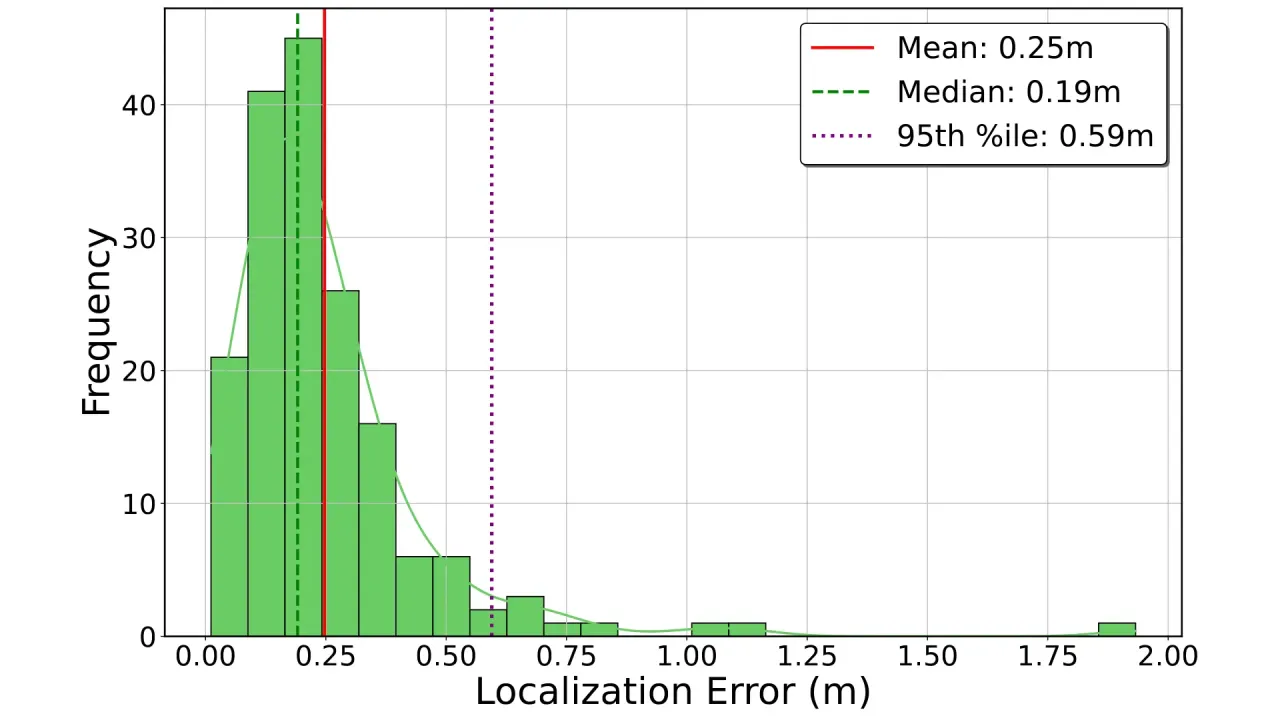
Comparative Performance
DSOG vs. Baselines
- vs. CNN: 89.6% improvement
- vs. MLP: 87.8% improvement
- vs. Random Forest: 74.7% improvement
- vs. Linear Regression: 88.8% improvement
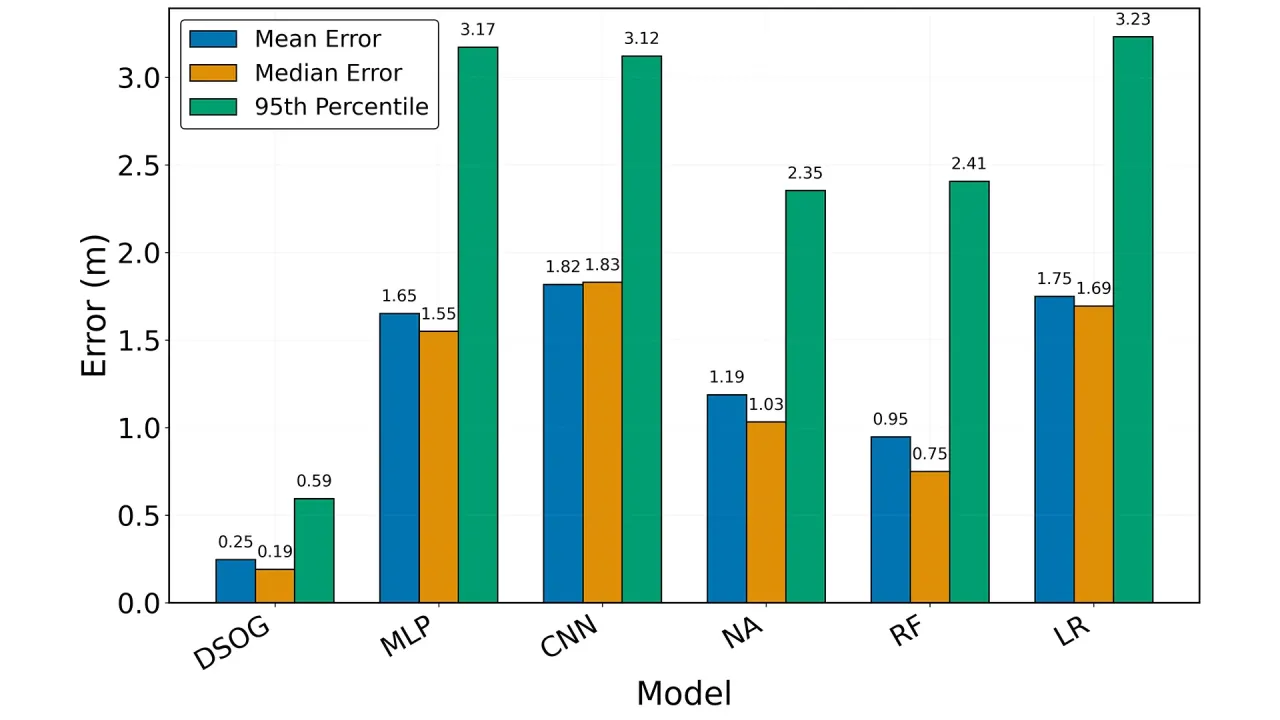
Reliability Analysis
- 80% accuracy at 0.3 m threshold
- 50% accuracy at 0.19 m threshold
- Consistent performance across all orientations
- Robust to multipath and NLoS conditions
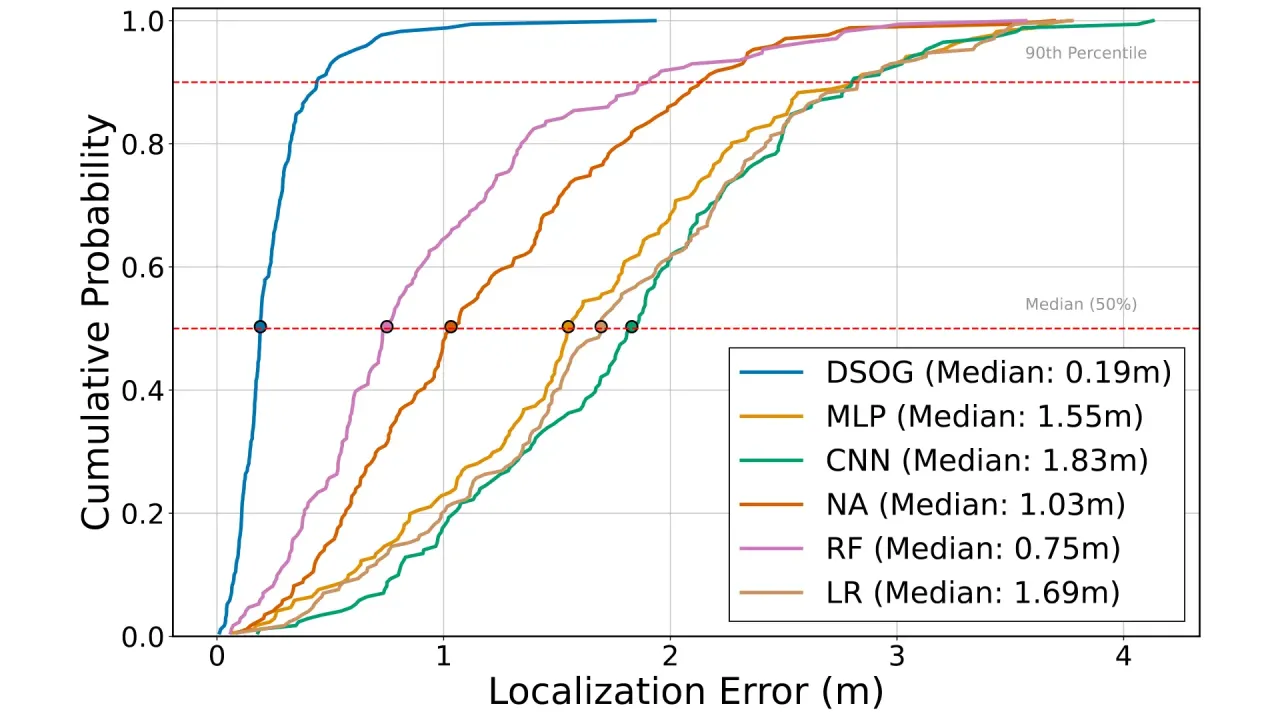
Copyright
The data and results presented in this work are protected by copyright and may only be used with proper citation.



